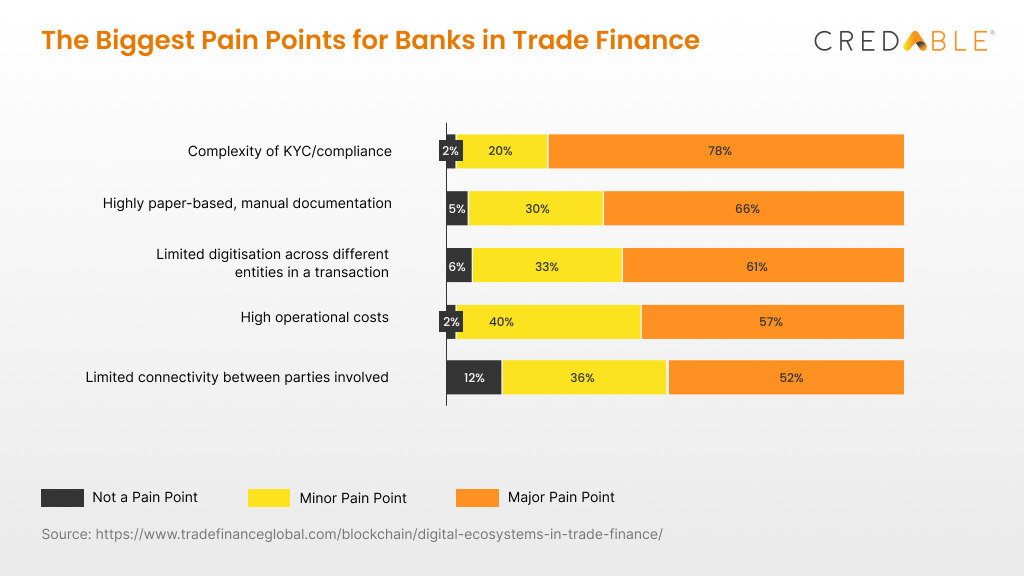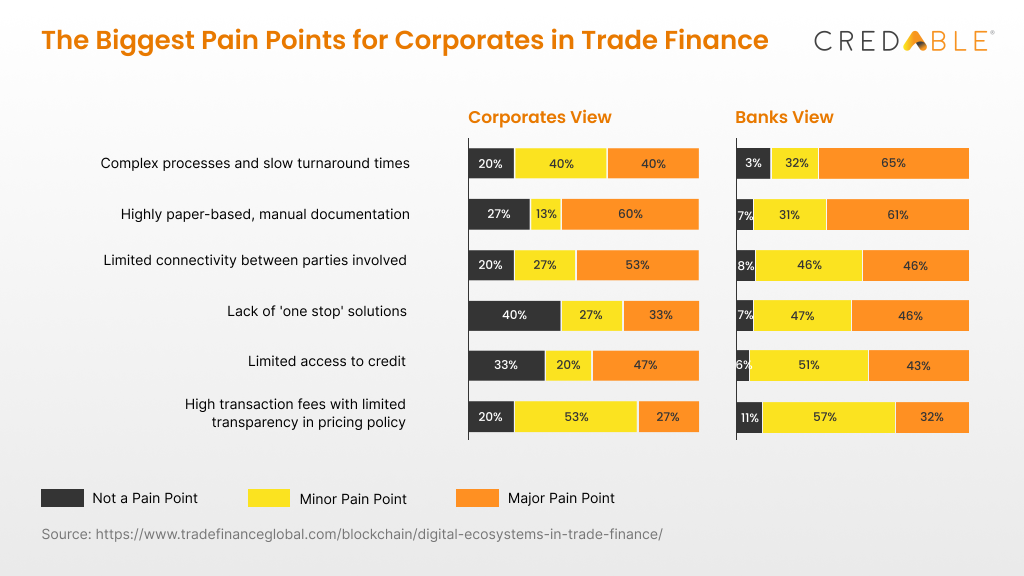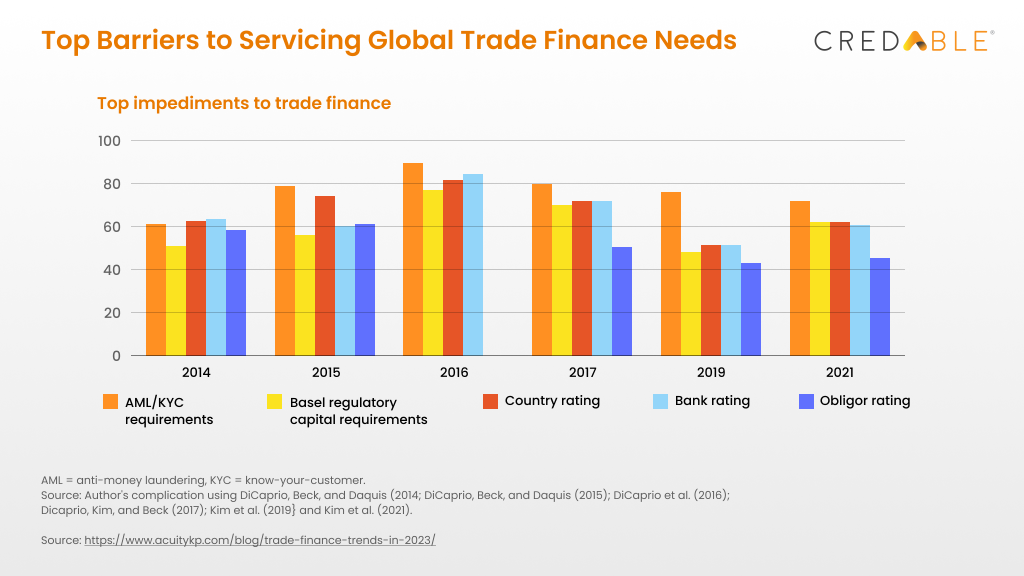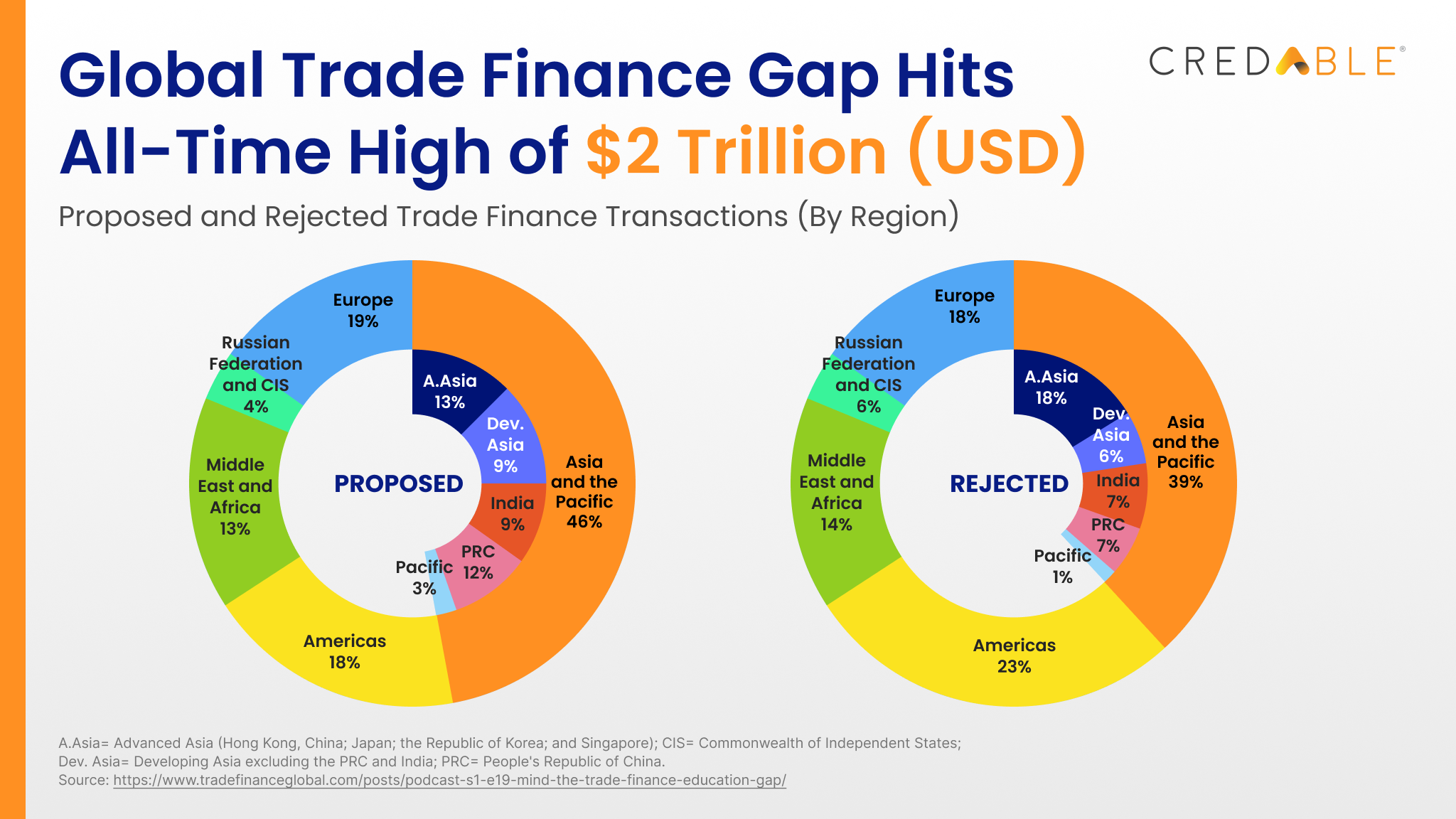Powering up Trade Finance: Connecting Banks and Corporates With Innovative Digital Ecosystems
Trade finance has been pivotal in driving the world economy forward. For banks, trade finance is not just economically vital. It has emerged as one of the most profitable products in the corporate banking portfolio.
Over the last decade, factors such as the big digitisation shift, corporate behavior changes, and regulatory and market demands are fundamentally altering the trade finance landscape.
Moreover, in response to a surge in inflation, interest rates have increased, and banks are taking a hawkish stance on risk by cutting back on loans. As a result, the trade finance gap, which was previously estimated to be $1.7 trillion, has reportedly surpassed $2 trillion now.
An improved trade finance ecosystem will be invaluable in progressing towards the financial inclusion goals. Optimising trade finance could also aid in creating a large number of the 600 million jobs required by 2030 to absorb the world’s growing workforce. The need of the hour is for banks and corporates to work together and build digital standards that will help them to succeed in the trade finance landscape of the future.
The pain points in trade finance for banks and corporates
One of the biggest hurdles of trade finance for banks and corporates is that the transaction documentation remains largely paper-based, driving up the need for manual data entry. This and poor connectivity between stakeholders within the trade landscape are increasing the burdens of costs and operational challenges.
For banks, apart from the excessive reliance on paper-based documentation, some of the other major pain points include:
● Complexities of KYC and other compliance requirements
● Lack of widespread digitisation across the different entities in a transaction

For corporates, the primary pain points revolve around factors such as:
● Limited access to credit
● Complexity of processes
● Slow turnaround times
● Lack of transparency

Above all, corporates are seeking automated digital trade finance solutions that speed up the entire process and provide greater visibility. Additionally, corporates are looking forward to increased connectivity between players in the trade community, such as banks, vendors, distributors, insurers, logistics providers, and customs agencies.
The advent of the digital wave
Currently, the trade finance landscape is fragmented, mostly paper-based, with multiple manual touchpoints across the value chain. There is a dire need to remove the operational silos resulting from disparate and disjointed systems.

The arrival of the digital tide is revolutionising the trade finance market. Artificial Intelligence (AI), Machine Learning (ML), and the Internet of Things (IoT) hold the promise of redesigning trade financing and solving many banking challenges. Technologies such as adaptive AI/ML algorithms, advanced analytics, Robotic Process Automation (RPA), and deep learning have been deployed to digitise processes and augment trade finance solutions. Key players need to leverage a digital trade finance ecosystem to succeed in this dynamic environment.
By utilising open APIs, a digital trade finance ecosystem connects different entities within the trade finance network, facilitating the secure flow of data between them.
These end-to-end digital platforms automate the entire journey, right from document collection and data capturing to underwriting and disbursements. They are also pivotal in channeling funds for trade across multi-tier supply chains. For instance, the deep-tier financing model enables MSMEs, even in the lower tiers of supply chains, to access affordable working capital.
“Implementing deep-tier supply chain financing will provide much-needed financial support to MSMEs further down the supply chain.”
Banking on digital technology
Today, banks need to go beyond what’s traditionally expected of them to remain relevant and profitable. It’s time for them to rethink their business models.
To address untapped markets, banks need to move away from their product-centric constraints and approach trade finance with a client-centric perspective.
With tech giants entering the market, how can banks grab a bigger slice of the trade finance pie?
Here are two things banks need to consider to grow their share in the trade finance market:
● Firstly, with the expansion of the banking consortia and the growing complexity of the supply chains, banks need to carve digital identities with unique value propositions that set them apart in the world of trade finance. They need to leverage technology infrastructure that is highly configurable and can be precision-engineered to meet the diverse needs of corporate clients and MSMEs.
● Secondly, and more importantly—seek partnerships that will help them leverage an optimal stack of tech-enabled solutions that will, in turn, provide the speed and sustainability required to cater to corporates and their extended network of vendors.
So, what’s next for trade finance?
Global trade is on the rise, and the competition is only getting more fierce.
Digitally advanced trade finance solutions are crucial for banks in facilitating financing, payment executions, and risk mitigation. Redesigning the trade finance ecosystem will not only bring banks and corporates closer. But this will also help banks to have greater oversight of their data, platforms, and processes—which would allow them to deliver next-level personalisation and cater to the unique needs of corporates and their MSME ecosystems.
“One thing is certain—trade finance is promoting a paradigm shift among banks, encouraging them to invest in their digital future.”
To match the needs of global trade now and beyond, banks need to move fast and seize the significant opportunities arising from the digitisation of trade finance.
